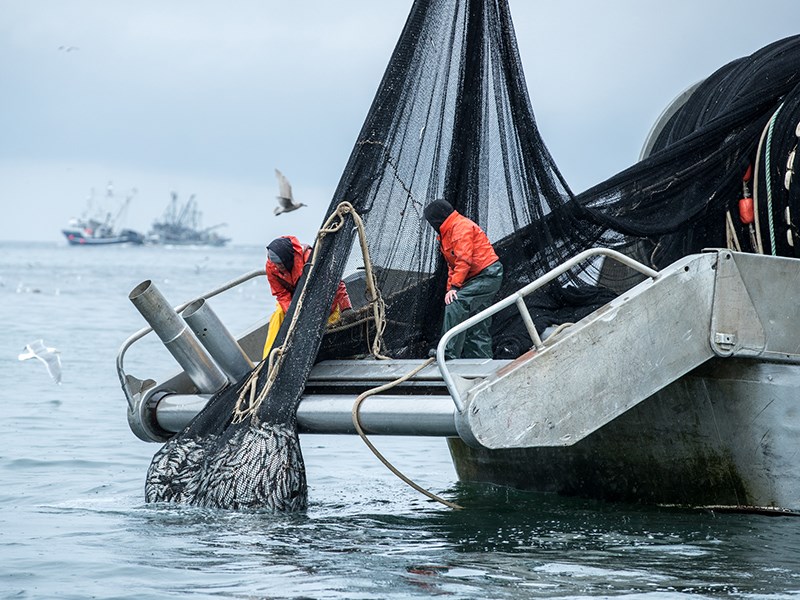The controversial roe herring fishery is opening this month despite an intense public campaign to shut it down. Seiners have been seen off Vancouver Island and Tla’amin Nation is watching what unfolds carefully.
“We have treaty fishing rights and the treaty rights do stretch over to just short of Vancouver Island,” said Tla’amin hegus Clint Williams. “What we've done is we've asked [Fisheries and Oceans Canada] to stay out of the inside waters here.”
So far, they have.
Williams said Tla’amin inside waters are within Area 15 from about Black Point south of Powell River, to just beyond Lund and inside Hernando, Savary, Harwood and Texada islands.
According to Fisheries and Oceans (DFO), stocks elsewhere in the strait have remained highly productive and have supported a commercial fishery for a prolonged period of time.
Currently, DFO surveys indicate near historic highs for the total aggregate stock in the strait, according to an email from regional herring officer Victoria Postlethwaite.
Despite there being abundant spawning habitat throughout the strait and stocks being at a very high level, the distribution of spawn has shifted and concentrated northward, with approximately 90 per cent of spawn occurring between Nanaimo and Comox. The once substantial schools of herring south of Nanaimo have not been observed in recent years.
Postlethwaite stated that the department is working with First Nations, including Tla’amin.
DFO is keeping the commercial roe fishery out of waters along the Sunshine Coast, including Tla’amin territory, where low spawn survey information and local observation levels in recent years confirm an absence of spawning herring beginning in the mid-1990s.
Williams said the fishery had been devastated since about 1985.
“I'm still not a 100 per cent believer in their science,” said Williams. “Their science said they could fish on the inside here and it's just devastated the fishery here.”
He added that Tla’amin does not want to be in the fishery commercially, but recognizes the crucial role herring play in the marine ecosystem as the main food source for chinook salmon.
According to Postlethwaite, DFO continues to work with first nations and stakeholders to develop additional objectives, including ecosystem consideration.
“We had earlier discussions in the year when we were asking them questions leading up to this because we're not supportive of this herring opening,” said Williams, “but we wanted to make sure that they weren't coming on the inside here and trying to plan for a fishery.”
Williams said talks the nation has had with DFO have been frustrating.
“It's just a matter of time before it gets up this way,” he added, referring to the herring fishery. “We're really tired of having the same conversation and we want to see some kind of enhancement effort. We would love to be a part of any enhancement efforts that can help repopulate the herring fishery.”
Williams has the support of both City of Powell River and qathet Regional District.



